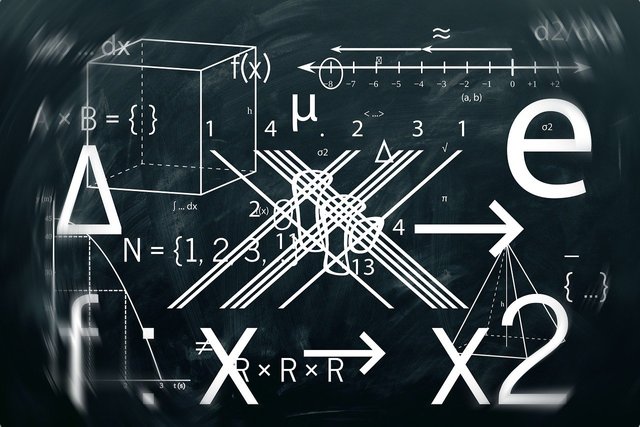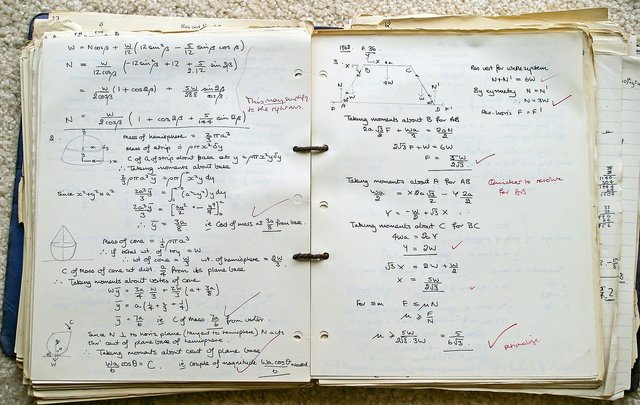Writing In Mathematics
Hello there. It is well known that mathematics deals with a lot of numbers. This is a stereotype and not a full truth. Mathematics does involve communication that is in writing, a bit of language, abstract concepts and looking an systems and structures in the physical world.
This post provides an overview of written communication in mathematics from early grade mathematics to high school mathematics and to university (academic) level mathematics.
Note: This is an opinion piece based on my experiences as a student, teaching assistant and mathematics tutor. Everyone else's experiences could be the same as this, slightly different or completely different.

Topics
- Writing In Early Mathematics
- Middle Age Mathematics & Writing
- Communication In High School Mathematics
- Written Mathematics At The University Level
Writing In Early Mathematics
A lot of early grade mathematics has a large focus on arithmetic and fundamental concepts such as addition, subtraction, multiplication, division, basic 2-D shapes, tally charts, counting money and the like. Not a lot of the early grade mathematics emphasize written communication as young students are still learning how to write letters, numbers and basic sentences.
Young mathematics students at best can write simple sentences such as "That shape is a square.", "It has four sides.", or "There are ten eggs left.". They can explain answers verbally much faster than their writing speed. Over time as they grow with age, their writing speed will get faster.

Middle Age Mathematics & Writing
Around grade four, five, six and seven, students are able to write more and their brains are more developed compared to grades one, two and three.
For a question that is stated as "Why is this shape a square?", students from grades four to seven can write their answer something like "This shape is a square because all four sides are the same length, there are four corners and there are four right angles."
Some of the students in this grade range may realize that some of the answers in mathematics do not just require just a number. There may be some writing along with the numbers.

Communication In High School Mathematics
High school mathematics makes the transition away from being number focused into more of algebra, linear systems, quadratic equations and the like. Many of the exercises and homework is algebra heavy with a mix of numerical computations. Answers in the back of the textbook are usually short and do not have much written text and sentences.
For the very few questions that do require written answers, the questions are usually application type problems in the word problem format. Not many of the questions are particularly abstract nor theoretical. Answers to these type of application questions would require a few sentences. It is rare for answers to math questions to be a paragraph at the high school level (unless it is a big math assignment or a data management / statistics question).

Written Mathematics At The University Level
University level mathematics is much more involved in terms of algebra and level of abstract thinking. A good bunch of mathematics courses such as calculus, differential equations and similar courses do not have so much writing as it is algebra heavy.
The more abstract mathematics courses that are for math majors, computer science majors and the like may involve proofs and heavy technical writing. These courses are common in second year and above with a rare few in first year mathematics courses. Courses and topics include real analysis, discrete mathematics, topology, etc. The technical writing here in pure/abstract mathematics is not easy for those new to this. There is one part where you have to understand what the definition and concepts. Another part is trying to figuring out how to prove things. The last part is writing out the solution/proof to a question or theorem and making sure what is written is communicated well.
Example
A simple math proof example is this. Prove that the sum of an even number and an odd number is an odd number.
My Proof

Some math professors / teachers would accept more or less detail than this but the idea is there.

Hello @dkmathstats, thank you for sharing this creative work! We just stopped by to say that you've been upvoted by the @creativecrypto magazine. The Creative Crypto is all about art on the blockchain and learning from creatives like you. Looking forward to crossing paths again soon. Steem on!
Even if you don't have an inclination towards pursuing mathematics as a career, the math you learn in high school can be useful in various ways in the future. Algebra, in particular, is a part of everyday life and you might also need it in other disciplines. Furthermore, it can help enhance your cognitive abilities for practical purposes with Refer to This Website for Additional Information . If you require help in factoring, try using factoring quadratics worksheets, which can develop your skills and deepen your understanding of the topic.